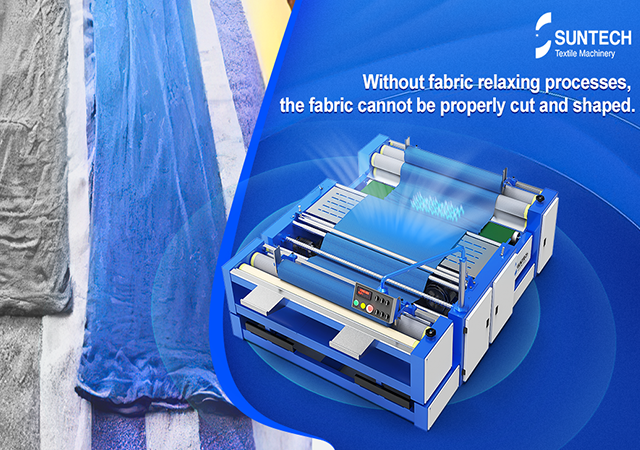Fabric relaxing machines play a crucial role in the textile and garment industry, significantly impacting the quality and efficiency of the production process. This article explores what fabric relaxing machines are and why they are essential in garment factories.
What is a Fabric Relaxing Machine?
A fabric relaxing machine is a specialized piece of equipment used in the textile industry to prepare fabrics before they undergo further processing, such as cutting and sewing. The primary function of this machine is to relax and stabilize the fabric, which is often under tension and stress from previous manufacturing processes like weaving, knitting, dyeing, and finishing. These processes can cause the fabric to stretch, shrink, or distort.
The fabric relaxing machine works by gently agitating the fabric in a controlled environment, allowing it to return to its natural, relaxed state. This process can involve various mechanisms, including:
Rollers and Conveyors: The fabric is passed through rollers and conveyors that help to spread and align the fibers evenly.
Steam Application: Steam is often used to soften the fibers, making them more pliable and easier to relax.
Vibration and Agitation: Some machines use vibrations or other forms of mechanical agitation to help release tension in the fabric.
Why Do Garment Factories Need Fabric Relaxing Machines?
Minimizing Shrinkage and Distortion:
Fabrics can shrink or distort after the initial processing due to residual tensions. By using a fabric relaxing machine, manufacturers can minimize these issues, ensuring that the fabric maintains its intended dimensions and properties during and after garment production. This is crucial for maintaining consistency in size and fit.
Improving Cutting Accuracy:
Relaxed fabric is easier to handle and cut accurately. Tension-free fabric lays flatter and smoother, which allows for more precise cutting patterns. This accuracy is vital for reducing waste and ensuring that each piece of the garment fits together correctly, enhancing the overall quality of the final product.

Enhancing Fabric Quality:
The relaxation process can improve the overall hand feel and appearance of the fabric. By removing wrinkles, creases, and other distortions, the fabric looks and feels better, which is essential for high-quality garment production.
Increasing Production Efficiency:
Properly relaxed fabric is easier to process in subsequent stages, such as cutting, sewing, and assembly. This increased efficiency can lead to higher production speeds and lower labor costs, making the manufacturing process more cost-effective.
Reducing Rework and Returns:
By ensuring that the fabric is in its best possible condition before garment production begins, factories can reduce the likelihood of defects and the need for rework. This not only saves time and resources but also decreases the chances of returns due to quality issues, enhancing customer satisfaction.
Consistency in Large Production Runs:
In large-scale garment manufacturing, consistency is key. Fabric relaxing machines help ensure that each batch of fabric performs in the same way, providing uniformity across all garments produced. This consistency is particularly important for brands that require high standards of quality and uniformity in their products.
Conclusion
Fabric relaxing machines are indispensable in modern garment factories, playing a pivotal role in maintaining the quality and efficiency of the production process. By minimizing shrinkage and distortion, improving cutting accuracy, enhancing fabric quality, increasing production efficiency, and reducing rework and returns, these machines contribute significantly to the overall success of garment manufacturing. As the textile industry continues to evolve, the importance of fabric relaxing machines is likely to grow, making them a vital investment for any garment factory aiming to produce high-quality products.




